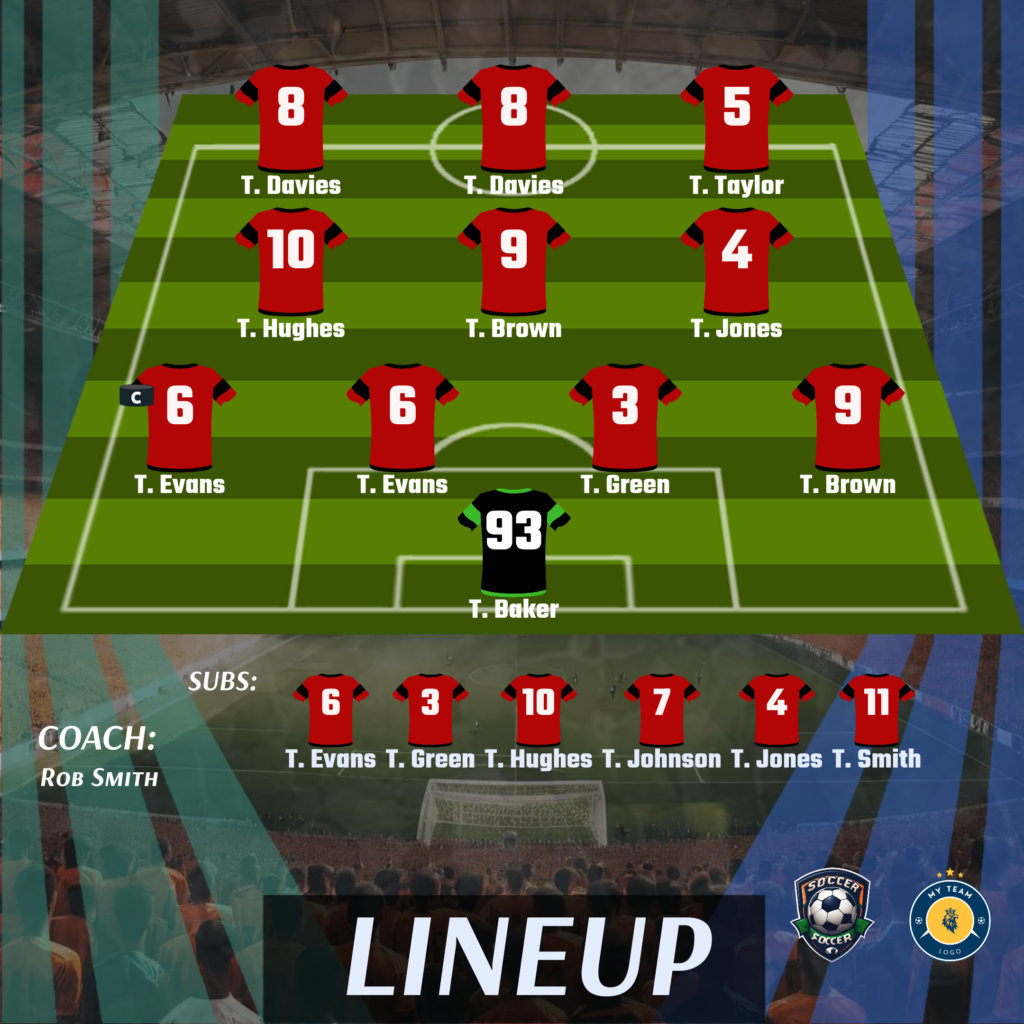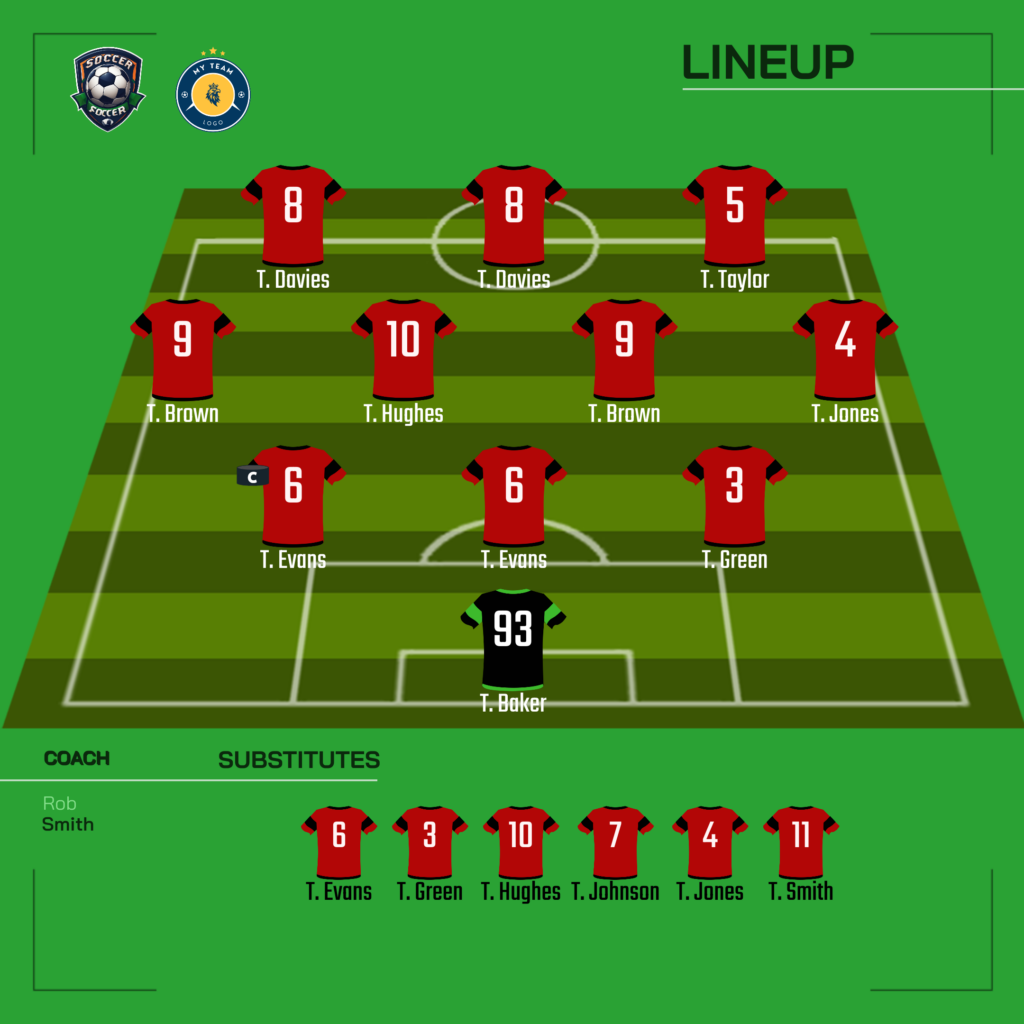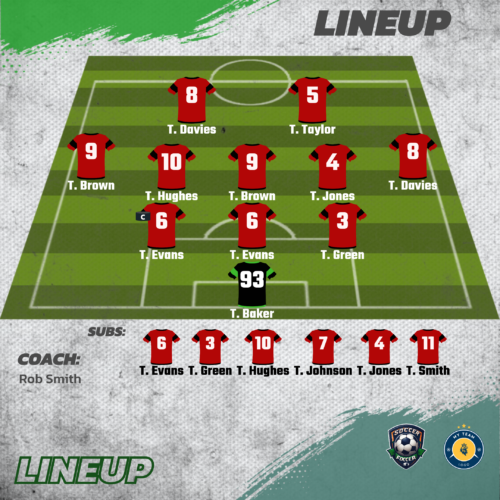What is an Offensive Football Lineup?
An offensive football lineup refers to the formation of a team in soccer, focusing on attack and maximizing the chances of scoring goals. In the world of football, offensive strategy is crucial for teams aiming to dominate the field and achieve success. By adopting an offensive mindset, teams can put constant pressure on the opposition, forcing errors and capitalizing on scoring opportunities. This approach not only entertains fans but also instills confidence in the players.

Most Popular Offensive Formations
- 4-3-3 – A formation that focuses on three forwards supported by central midfielders. This is a very offensive strategy that allows for quick wing attacks. The 4-3-3 formation is particularly effective when the wingers possess speed and dribbling skills, as they can stretch the opponent’s defense and create space for the central striker. Additionally, the midfield trio provides balance by controlling possession and distributing the ball to the attacking players.
- 3-4-3 – A setup with three defenders and four midfielders, providing strong control over the center of the pitch and the possibility of dynamic counterattacks. This formation can transition into a 5-4-1 defensively, but its primary goal is to overwhelm the opposition with numbers in the attacking third. It requires highly skilled wingbacks who can both defend and contribute offensively.
- 4-2-3-1 – A formation that balances offense and defense, with one forward supported by three attacking midfielders. This is one of the most commonly chosen formations in professional football. The two defensive midfielders provide a solid shield for the backline, allowing the attacking players to take risks and push forward. This formation thrives when the central attacking midfielder can link up effectively with the striker and wingers.
Key Players in an Offensive Football Lineup

- Forwards – Their main task is to score goals. Speed, precision, and heading ability are crucial. A clinical forward can turn half-chances into goals, making them indispensable in an offensive lineup. Successful teams often rely on a prolific striker who can consistently find the back of the net.
- Wingers – They play the role of both forwards and midfielders. Their task is to deliver balls to the forwards and create scoring opportunities. Wingers who can cut inside and shoot, as well as provide accurate crosses, add versatility to the attack.
- Central Midfielders – They control the game in the middle of the field, help in defense, but primarily create offensive plays. Playmakers with exceptional vision and passing range are essential in unlocking stubborn defenses. Their ability to switch play and dictate the tempo often dictates the team’s attacking flow.
- Attacking Midfielders – Positioned behind the striker, they bridge the gap between midfield and attack. Their role involves creating chances, making late runs into the box, and supporting the forward line.
The Importance of an Offensive Football Lineup in Modern Football
Nowadays, football teams increasingly focus on offensive formations because scoring goals is key to winning and attracting fans’ attention. An offensive football lineup allows for dynamic and exciting play, often determining the outcome of the match. Modern football rewards teams that take initiative and control the game through aggressive offensive tactics. Teams with a strong offensive identity often find greater consistency in results and higher success rates in tournaments. Additionally, offensive football leads to higher engagement from supporters, which can enhance team morale and performance.
How to Create an Effective Offensive Football Lineup?
- Opponent Analysis – Adapting the formation to exploit the opponent’s weaknesses. Studying previous matches and identifying defensive vulnerabilities can help shape the attacking approach.
- Player Selection – Choosing players with the right offensive skills. A team should focus on selecting individuals who excel in one-on-one situations, possess creativity, and have a proven track record of scoring or assisting.
- Training and Tactics – Regularly practicing offensive schemes and implementing them during matches. Drills that enhance passing accuracy, movement off the ball, and finishing are essential in refining the team’s offensive prowess. Simulated match scenarios allow players to understand their roles and improve their decision-making in high-pressure situations.
- In-Game Adjustments – Flexibility is key. Coaches must be prepared to make tactical changes based on the flow of the game. Substitutions that introduce fresh attacking players or tactical shifts can turn the tide in favor of the team.
Conclusion
An offensive football lineup is an integral part of modern football, determining a team’s success. Effective offense, well-chosen formation, and the right players are the keys to scoring goals and winning matches. Teams that master offensive strategies not only achieve greater success but also provide thrilling entertainment for fans, solidifying their place at the top of the footballing world.
If you want to create such lineups you have to check out our lineup builder
